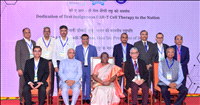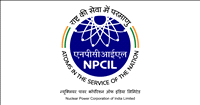Recommendations to address current challenges
25 Jul 2007
Recommendation
1
NASSCOM to scale existing innovation initiatives
NASSCOM will recognize breakthrough innovations and support these with necessary global marketing and funding support. It will also institutionalize an annual innovation survey that will track and capture the performance and perspectives of Indian IT-ITES companies on different aspects of innovation.
Recommendation
2
NASSCOM to promote an ''Indi Innovation Framework''
The ''Indi Innovation Framework'' will adopt a three-pronged approach:
- Establish Indi Innovation Certification Programme - basis a rigorous evaluation criteria that will holistically address an entrepreneur''s need for branding, mentoring and networking support thereby increasing the probability of entrepreneur''s success. Certified entrepreneurs will have an advantage while competing in the market place for resources and provide access to a support network especially created under the ''Indi Innovation Framework''.
- Set-up
an India Innovation Fund -
focused on seed / angel stage funding, a stage where
the risk is the highest and least amount of funding
exists. The fund promoted by NASSCOM will follow key
guiding principles such as:
o Promote innovation in emerging technologies
o Develop sustainable linkages between entrepreneurs, centres of research excellence, and established firms
o Foster technology seeding and exchange of information globally
o Promote and nurture IP driven entrepreneurship
o Provide priority to commercialisation of domestic R&D
The fund will be created through a public private partnership. This approach will allow the government to play a passive role of being a ''limited partner'' (supplier of capital) while the investment decisions are made by a set of professional fund managers. The government''s funding support will ensure that investments at the riskiest stage of business can be funded adequately by low cost domestic capital. Additionally, the fund will also attract private firms to invest as it will give them access to a unique PPP fund managed by professional managers.
- Thematic Innovation Platforms - NASSCOM will bring together several ecosystem constituents to launch theme-based fundamental and applied innovation platforms to provide thought leadership in themes which are relevant to the Indian IT-ITES industry. Fundamental innovation platforms will focus on basic science themes while applied innovation platforms will focus on themes that apply these scientific innovations to specific problem domains.
Recommendation
3
Government should synergise its innovation-related initiatives
There are several mechanisms that the government can adopt to synergise its disparate innovation initiatives to drive a focused national innovation agenda. These include:
- Creating a National Innovation Policy which identifies the strategic focus areas, operational guidelines, capacity building roadmap, key institutions, funding mechanisms, etc. Specific innovation-related programmes can be launched under the aegis of the National Innovation Policy.
- Launching national mission mode projects in key technology areas like automotive, aerospace, defense, space, healthcare, etc. Adopting a mission approach will obtain better synergies through co-ordination of different initiatives and collaboration among industry and research institutions.
- Establishing National Innovation Commission, a nodal body to provide innovation thought leadership to both the government and the private sector.
Irrespective of the chosen coordinating mechanism(s), the three guiding principles for a national innovation agenda should be social welfare goals such as IT enabled healthcare or education delivery among others; academia and research interests and commercial and usability considerations for technology.
Recommendation
4
Establish Innovation Clusters of research institutes,
academia and industry
For promoting these innovation clusters, focus should be on building thematic clusters, which leverage local industries and institutions and allows the cluster participants to leverage the concentration of talent already available in the vicinity or attract talent around a particular theme. Such thematic innovation clusters would lead to focused research and accelerated creation of IP assets. As an illustration, Pune and Chennai could be innovation clusters for automotive and wireless technologies respectively.
Recommendation
5
Government should implement bold changes in policies related
to innovation
While some of these changes will be amendments to existing regulations, there is also a need for introducing some bold measures in the following areas.
Patents & Copyrights: The overall IPR environment in India can be improved still further by undertaking several initiatives such as:
- Creating
a National Patent Fund or encourage existing funds to
provide financial support to technology entrepreneurs
(especially new start-ups) for the entire patent life-cycle
management.
- Establishing
more patent offices and improving efficiency of existing
patent offices
- Investing
in capacity building for IPR enforcement in judiciary
- Creating IP courses in secondary and tertiary education curriculum, especially in technology, management and law institutes
Business Environment: Some recommendations for improvement are:
- Simplify
entry and exit procedures for firms through ''single
window'' clearances
- Streamline
the import and export procedures and make custom offices
more efficient
- Structure
the Indian bankruptcy law along the lines of developed
countries
- Simplify
procedures for entrepreneurs to exit from businesses
and rationalise statutory compliance requirements which
for entrepreneurs
- Provide special incentives to encourage the Indian Diaspora to invest in technology start-ups in India
Venture Capital: While risk capital availability in India has shown a tremendous surge, some policy reforms are required to stimulate further growth:
- Seed
stage funding should be part of priority sector obligations
for banks that invest in venture funds
- Stimulate
seed capital funding by providing strong financial incentives
including tax write-offs for losses, no tax on profits
for a stipulated period, direct tax benefits for investments,
etc.
- Provide
incentives to local industry firms and financial institutions
to invest in domestic venture capital funds. Incentives
could include investments in VC funds being classified
as R&D expenses, zero capital gains tax on returns
from VC funds, etc.
- Relax
constraints on institutional investment in domestic
venture funds
- Allow
creation of venture capital funds as Limited Liability
Partnerships (LLP) and Limited Liability Corporations
(LLC)
- Stimulate investments by High Net Worth Individuals (singly or as a group) in technology start-ups by providing financial incentives including offsetting the investment against taxable income
Commercialisation of domestic technology: To stimulate the demand and supply side of technology development, some specific recommendations are as follows:
- Provide
priority funding for technology development projects
- Encourage
public private sector partnerships for R&D in areas
such as defence, space, atomic energy, etc.
- Preference
in government procurement for IP assets created in India
- Create
enabling legislation to encourage commercialisation
of IP assets created through government funding
- Encourage
research institutes to invest in industry focused research
by linking a proportion of the funding provided to institutes
to the number of patents generated / licensed by the
institute
- Remove
restrictions on the participation of research scientists
and academics in commercialisation of their research
outputs
- Encourage technology educational institutes to set up incubation centres to stimulate entrepreneurship among both the academia and student community.
Recommendation
6
Collaborate with international educational institutes
to increase quality of local research
India produces less PhD scholars in IT technologies annually than any one leading academic institution in the US. Bilateral collaborations will benefit both Indian and the international institutes. While Indian academia get access to cutting edge technology and process know-how for accelerating the quality and quantum of research, the international institutes will get access to the Indian talent and knowledge about the domestic market.
To make such collaborations sustainable, the government and the Indian academia will need to take some bold steps especially around operational autonomy of academic institutes and allowing FDI in the education sector.













.jpg)






.jpg)









